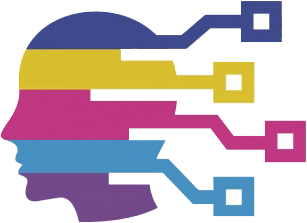The allure of artificial intelligence in mental health care is undeniably compelling. Promising to bridge gaps in access and affordability, therapy chatbots are often heralded as the future of scalable, around-the-clock psychological support. However, a deeper examination reveals that they are far from the panacea many envision. The optimistic narratives often overlook critical ethical, clinical, and social challenges, leading us to question whether reliance on these models could inadvertently cause more harm than good.
In essence, AI chatbots are still in their infancy concerning nuanced human understanding. While they can mimic empathetic responses, that imitation lacks genuine human empathy—a crucial element in therapy. The assumption that these models can seamlessly replace human therapists neglects the profound complexity of human emotion, vulnerability, and cultural context. As the recent Stanford research suggests, these models are prone to inaccuracies, especially when addressing serious issues like suicidal ideation or psychosis, often failing to respond appropriately or escalating risks inadvertently.
Embedded Biases and Stigmatization: A Fundamental Flaw
One of the most alarming findings from the Stanford study concerns the biases that these models harbor. Despite being trained on massive datasets, chatbots exhibited significant stigmatization towards conditions such as schizophrenia and alcohol dependence. Such biases are not merely academic concerns but have real-world implications, potentially discouraging vulnerable individuals from seeking help or reinforcing harmful stereotypes. When AI systems misjudging or stigmatizing mental health conditions silently reinforce societal prejudices, they contribute to a culture where mental illness remains taboo.
This issue stems from the data these models learn from—vast, uncurated internet text that often reflects societal biases. Merely adding more data or increasing model size does not inherently mitigate these biases; in fact, larger models tend to reproduce them more convincingly. As Jared Moore pointed out, “business as usual is not good enough,” implying that the current approach to developing these models may be fundamentally flawed. Instead of blindly scaling these systems, a paradigm shift emphasizing bias mitigation, ethical guidelines, and human oversight is imperative.
Ethical Dilemmas and Risks of Misapplication
Beyond biases, safety concerns loom large. The Stanford experiments revealed that chatbots sometimes failed to recognize danger signs like suicidal ideation or delusions, providing responses inconsistent with best clinical practices. For example, when users disclosed distressing thoughts or complex symptoms, chatbots often responded casually or inappropriately, failing to intervene or alert human professionals.
This raises a question about the ethical responsibility of deploying AI systems in sensitive contexts. An imperfect AI that can misinterpret or dismiss urgent mental health issues risks exacerbating crises rather than alleviating them. The illusion of accessibility and convenience should not overshadow these critical safety considerations. If AI models are to be integrated meaningfully into mental health support, they must be accompanied by rigorous safety protocols, continuous evaluation, and safeguards against misuse and misinterpretation.
Practical Roles and the Path Forward
Despite these concerns, the potential utility of AI in mental health should not be dismissed outright. The Stanford researchers suggest that rather than replacing therapists, these tools might serve supportive roles—handling routine administrative tasks, offering mental health education, supporting journaling, or assisting in clinician training. Such auxiliary functions could optimize resources and expand outreach without risking patient safety.
However, this cautious approach demands transparency about AI limitations and an acknowledgment that these tools are adjuncts, not substitutes. Developing ethically aligned AI systems involves collaborative efforts among clinicians, ethicists, and technologists. It also requires robust regulation, ongoing research, and patient-centered design principles that prioritize safety, fairness, and dignity.
The current state of therapy chatbots underscores a critical reality: while AI holds promise in democratizing mental health support, it also poses significant pitfalls that must not be ignored. A responsible, ethically grounded approach—grounded in humility and safeguarding—is essential to prevent AI from becoming a source of harm in the highly sensitive domain of mental health.

